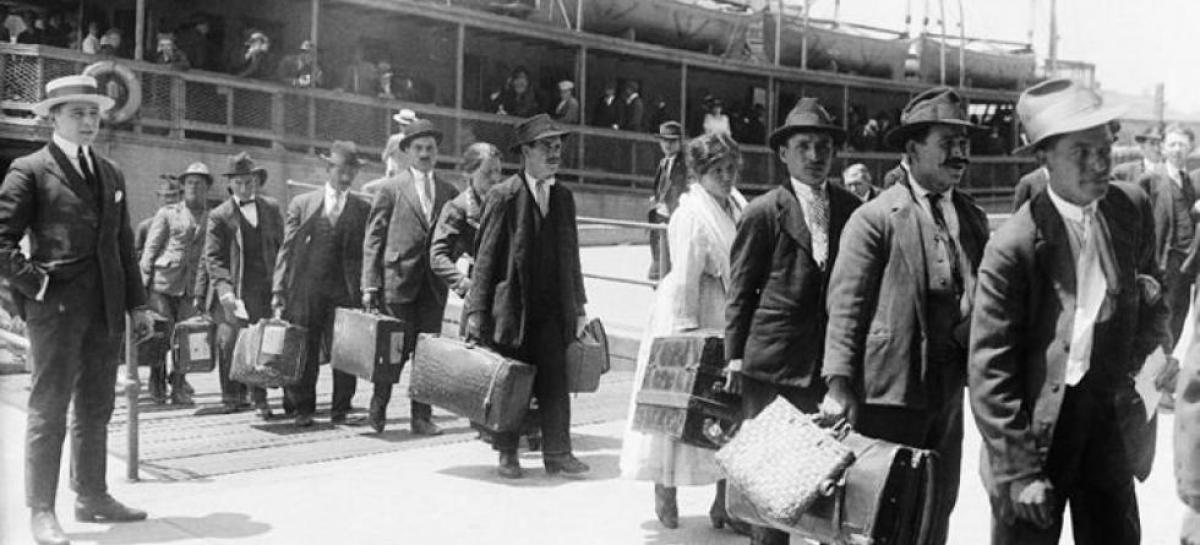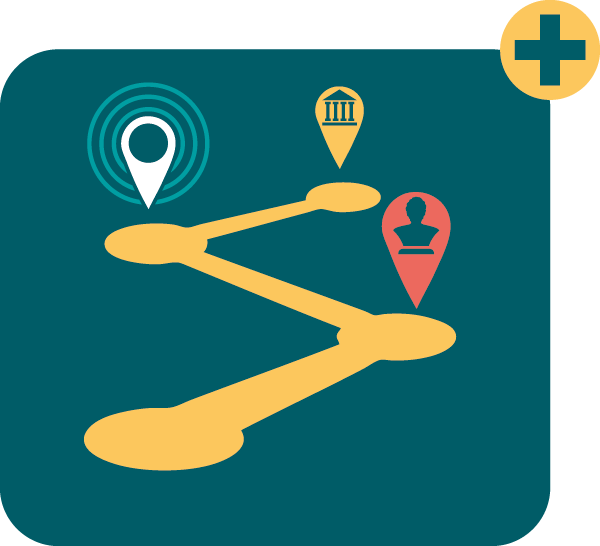Life as it is, through a historical lens

"The past is a foreign land, there they do things differently." This is how British novelist L. P. Hartley began his oeuvre The Go-Between. Those who actually stare into that giddy past soon realize that this phrase contains as much truth as lie. Yes, things were different, but as in a grade school poem, the rhyme scheme often seems all too predictable. "History never repeats itself, but always rhymes a little": that's already more like it!
The ErfgoedApp contains a range of heritage walks that give you a glimpse into that recognizable past. The following tours present themselves as snapshots from the past. All are walks through a historic city with former residents as guides. If you look at the black screen of your smartphone, you see yourself; if you open one of these walks in the ErfgoedApp , you may still see yourself staring back.

Out and about with an Almanac - Bruges Public Library
Public Library of Bruges launched'Op Stap met een Almanak' in the ErfgoedApp in September 2023. This educational city tour was specially designed for second grade secondary school students. However, don't let that stop you from taking the tour even as a non-student. The heart knows what the head wants and the head wants to know things!
The tour starts at the Main Library Biekorf where we are suddenly catapulted roughly two and a half centuries into the past. In the distant year 1778, we do not meet power-hungry marquises or justice-seeking revolutionaries. Who we do encounter is Andreas Kuipers, an ordinary boy traversing the late-eighteenth-century city because of father's day jobs. Thanks to the library's historical collection, this time travel is supported by an authentic city almanac. Almanacs like this one were published periodically and contained all the information a Bruges resident needed at the time to fruitfully complete daily life. From postal services over markets and holidays to the closing times of the city gates (yes, back in the day you could really justify a "night on the town").
Using this source, we learn about exchange rates, postal distribution, pharmacy visits and much more. In less than an hour, you get to know the city as the eighteenth-century Bruggelings saw it. The Bruges Public Library even offers an activity bundle that will further challenge your knowledge of the city. Once you recover from your adventure on the Grote Markt with a fries bag or trappist in hand, you may well ask yourself, "Actually, not that much has changed, has it?"
Ik Jan Smeken - Brussels Heritage Unit
From Bruges to Brussels then, and this time a little further back in time (where things are even more different, but still rhyme a bit). Here we follow Jan Smeken, main character of the novel I Jan Smeken but, above all, a quirky man. In the hinge years between the Middle Ages and the early modern era (read turn of the fifteenth to sixteenth century), Jan Smeken was resident city poet of Brussels, which had in the meantime become the capital. Both authors of Ik Jan Smeken, Rick de Leeuw and Remco Sleiderink, guide you through Jan's Brussels, usually also in Jan's words. Thanks to modern retellings of Jan Smeken's poems, we get to know fifteenth-century Brussels as he knew it. Thus we attend the execution of Slakke Warre, who caught snails and ate them raw, until Warre decided to go on a killing spree. We see Jan and his friends reenacting plays on the quays along the Zenne, which then flowed through the city uncovered. Executions on the Grand Place and a river running through the city center, it sounds like the past really was a different country. However, when the snow falls over the streets of Brussels and we hear Jan Smeken describing the emerging snowmen, it does kind of rhyme. Doesn't it?

Walk Central Station-Red Star Line Museum - Red Star Line Museum
"I was seven years old and the train was starting to fill up." So begins the tour of the Red Star Line Museum. Amidst the bustle of Antwerp's Central Station, we travel back a century and a half to that strange land we know as "the past" and follow the stories of the countless emigrants, mostly from Central Europe, who in turn also entered an unknown world. Often carrying everything they could carry, they arrived from all corners of Europe at the Middenstatie (Central Station). Then they made their way to the quays of Antwerp, where steamships of the Red Star Line would take them to imaginative America. Through historical video clips, we look behind the veil of time and come face to face with that past. This experience too, leaving your home to begin a new chapter elsewhere, sounds all too familiar to many. What used to take place is more than just the comforts of a day out on the town, winter fun and amateur theater. More often than not, it was about the challenges presented to us by the world, and in the process, about human resilience.
Are you yourself curious about what life was like in the past and the experiences of those who walked around here centuries ago? Then be sure to try one of these, or one of the many other, tours in the ErfgoedApp and discover for yourself how the past may have been a foreign land, but was not so different.
